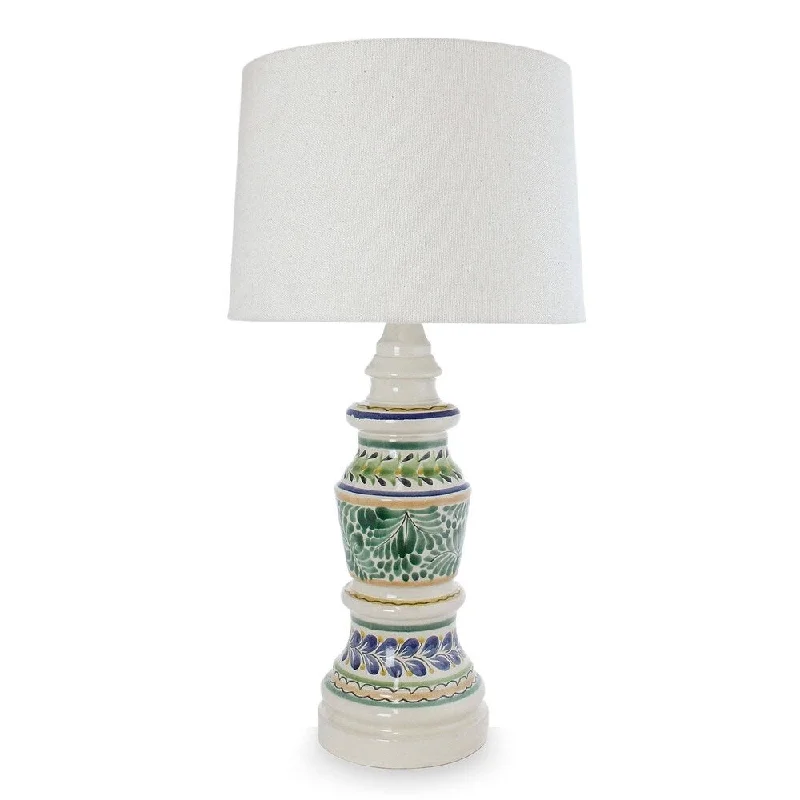This handmade creation is offered in partnership with NOVICA, in association with National Geographic. Verdant branches and blue jacarandas evoke Chapultepec, Mexico City's urban forest, on the base of this table lamp. Gorky González creates the motifs on this elegant table lamp. It is crowned with a cotton lampshade, and the switch is located on the cord.
Product Features:
- Weight: 6.0 lbs
- Lamp: 17.75" H x 7.25" Diam.
- Lampshade: 10.75" H x 14.25" Diam.
- Total height: 28.5" H
- Colors: Green, Multicolor
- Shape: Drum
- Material: Ceramic
- Shade: Cotton and Polystyrene
- Type: Spider fitting
- Switch type: On/off line
- One light
- Marked with artist's initials or trademark
- Handmade item -- color, size and/or motif may vary slightly
- Takes one 60 or 40 watt bulb (not included)
- UL certified
- Made in Mexico
Story Behind the Art:
My main interest was always the rescue of traditional Majolica pottery. Among his many, many awards, I was born in Morelia on September 27, 1939. My father was the sculptor Rodolfo González, with whom I worked and studied sculpture, metal casting and the lost wax process.
In 1962, at the age of 23, I worked in the School of Arts and also the Instituto Allende in San Miguel de Allende. There, I set up a metal casting workshop for sculpture and it was used by both students and teachers. Later on, I founded a small ceramics workshop where I reproduced Jean Byron's designs in terracotta.
However, my main interest was always the rescue of traditional Majolica pottery. I studied ceramics in Guanajuato, and this certainly let me see the need to rescue this lost craft, so representative of the region. It was through this interest that I met Hisato Murayama, a very well educated young Japanese man who was here studying Spanish, philosophy and Mexican history. He had a deep knowledge of ceramic techniques and lent me a number of books on Japanese art. He encouraged me to continue my studies in his country, and I received a two-year scholarship to study in Japan. While there, I not only learned new ceramic techniques, but I also met Toshiko, the woman who became my wife.
I first studied in Tokyo with the master Tsuji Seimei; he taught me the shigaraki technique. Then I moved to Bizen where I studied with Kei Fijiwara, who is considered a living national treasure. With him, I learned the technique known as Bizen-yaki. My last teachers were Kato Kobe and Kioske Fujiwara, who taught me the ten-Mocu, karatzu and Shino techniques. All of these are very ancient techniques, which require special effort and attention in the elaboration of ceramics.
Please allow 10 business days for the product to leave our warehouse and to receive tracking information. You should expect to receive this item within 15 business days.

